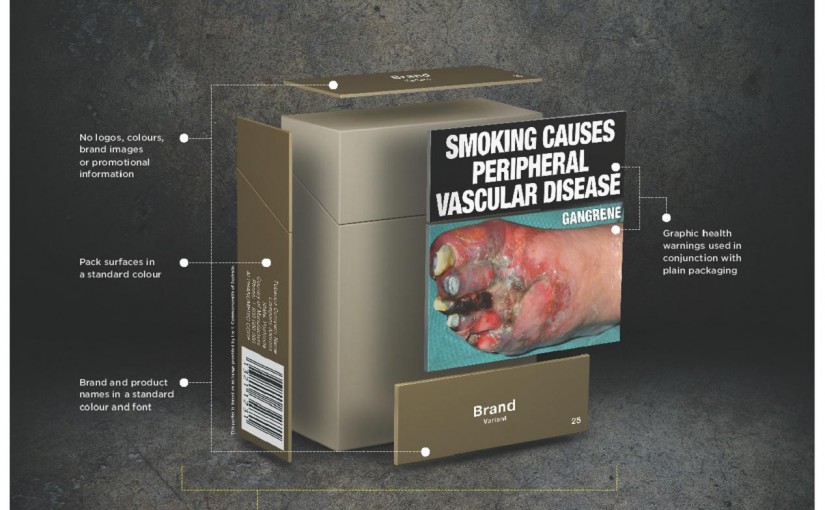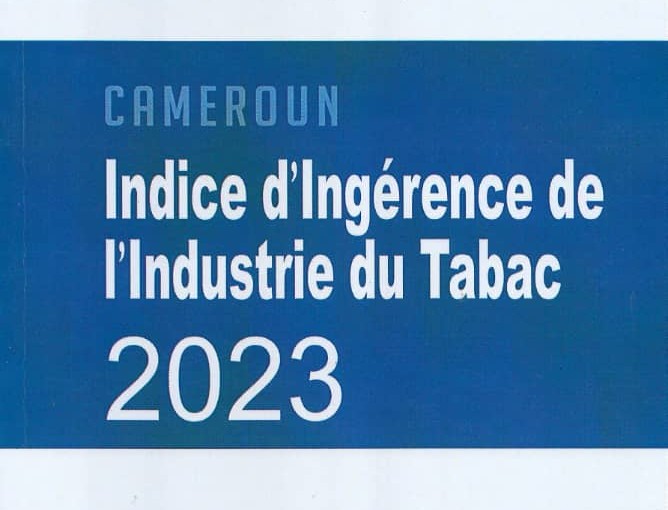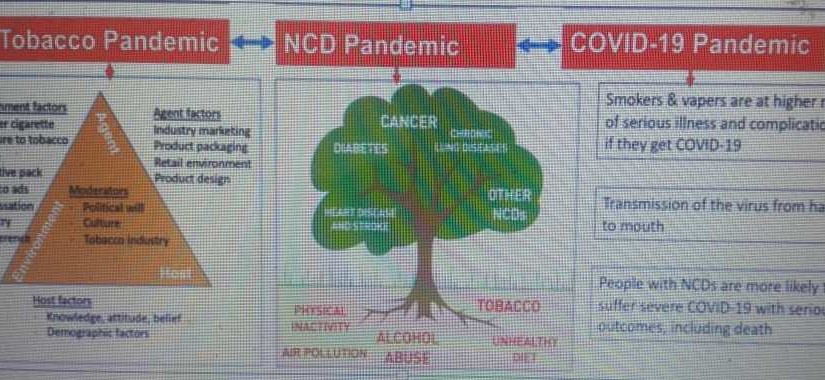The Cameroon Coalition for Tobacco Control, C3T, has reiterated that the adoption of a national tobacco control law by parliament remains an important legal instrument to better combat the use of the product in Cameroon.
“A national tobacco control law would lead to a drop in tobacco use in the country and many human lives being consumed daily in tobacco smoke would be saved.”
This was one of the key messages team members of C3T highlighted at a press conference in Douala last November 27 as part of activities to follow-up and ensure a complete implementation of the graphic health warnings in Cameroon.
A January 3, 2018 MINSANTE-MINCOMMERCE joint decision laying down condition for packing and labeling of tobacco products sold in Cameroon requires that all packages obligatorily carry images showing afflictions or diseases linked to tobacco consumption.
Speaking at the event, C3T Communication Officer, Prince Mpondo hailed government for the decision on graphic health warnings geared at preserving public health and noted that such a move is a demonstration of Cameroon's will to fully put in place the content of the WHO Framework Convention on Tobacco Control.
That notwithstanding, and in addition to national tobacco control law, he encouraged the authorities to adopt other measures of the convention notably an increase in taxation of tobacco products, a complete ban of advertisement of tobacco products and the creation of 100 percent non-smoking spaces.
Prince Mpondo acknowledged the important role the media has played alongside C3T in forging tobacco control activities in Cameroon and said the product remains a national epidemic affecting mostly the young people. He cited the 2013 Global Adult Tobacco Survey, GATS which shows that some 1million Cameroonians representing about 9 percent of the population are regular users of tobacco products.
The same study indicates that close to 7 million Cameroonians are unwillingly exposed to tobacco smoke in public places and are unfortunate victims of all the diseases linked to the product like the active smokers.
“A 2014 survey on tobacco use amongst the youths shows that more than 10 percent of them ages 13 to 15 years are users of tobacco products. Thus, close to 20 000 Cameroonian youths are regular users of tobacco and its products…According to WHO, tobacco causes 3 500 deaths in our country and about 3 percent of all deaths in the African region. Tobacco is also a major risk factor of non-communicable diseases such as cancers, diabetes, cardio-vascular diseases and hypertension representing 35 percent of deaths yearly in our country,” Mpondo stated.
He maintained that it was against such a backdrop that the joint decision of January 3, 2018 on graphic health warnings and which fully took effect from June 12, 2019 was taken. “There are new cigarette packets in the market carrying images of afflictions linked to tobacco covering 70 percent of the front and back cover with messages such as ‘smoking kills or tobacco kills' in English and French languages. The packaging of 20 sticks of cigarette in a packet, suppression of the mentioning of various aromas on packages,” are some of the measures as spelt out in the regulation to better inform and protect the population against the strategies of the tobacco industry.
He said from ongoing education and sensitisation campaigns C3T is carrying out on the field, it has been observed that not all the tobacco industries are respecting the joint decision on graphic health warnings for they are still old packets with old messages circulating in the market.
He condemned moves by some industries to block the application of the decision and called on government to take its responsibilities of preserving public health. He recalled that all actors in the chain right down to the retailers must ensure the conformity of the tobacco products they are selling failure which they are exposed to provisions of articles 74 and 228 of the Penal Code that could sanction them for hazardous activities.

 (
( (
(







